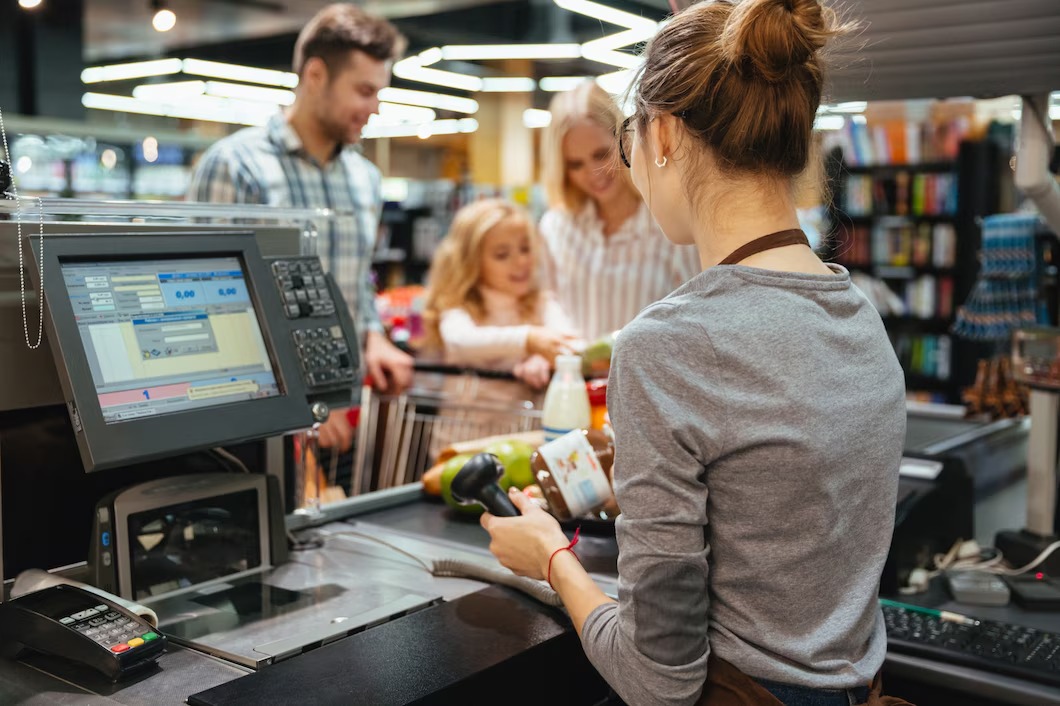
How to Seamlessly Integrate Online and Offline Sales
In today’s retail world, e-commerce and physical stores are merging. Businesses that blend online and offline retail integration can offer a seamless shopping experience. This boosts customer engagement, increases sales, and builds brand loyalty. This method, known as unified commerce, lets customers switch between digital and physical stores with ease.
As consumer expectations shift and technology advances, retailers need to use blended retail strategies to stay competitive. This guide looks at why integrating online and offline sales is vital. It also outlines key benefits and gives practical steps to create a harmonised retail experience.
Why Unified Commerce is Essential for Retail Success

1. Consumers Expect a Seamless Shopping Experience
- 73% of shoppers use multiple channels before making a purchase.
- Customers expect a frictionless transition between browsing online and visiting a store.
- Mobile commerce is growing, influencing both online and in-store purchases.
2. Increases Customer Engagement & Retention
- Omnichannel shoppers have a 30% higher lifetime value compared to single-channel customers.
- Offering integrated shopping experiences fosters stronger brand loyalty.
3. Boosts Sales & Revenue
- Unified commerce allows businesses to capture impulse purchases across multiple touchpoints.
- Retailers that blend online and offline sales enjoy better conversion rates and more repeat purchases.
4. Enhances Inventory Management & Logistics
- Real-time inventory tracking prevents stock discrepancies between online and physical stores.
- Blended strategies like Buy Online, Pick Up In-Store (BOPIS) streamline fulfillment.
Key Strategies for Online and Offline Retail Integration

1. Create a Unified Customer Experience
- Maintain consistent branding, pricing, and promotions across all channels.
- Ensure that customers receive the same level of service online and in-store.
- Create a single customer view. Connect loyalty programs, purchase history, and preferences on all platforms.
2. Invest in Integrated Technology & POS Systems
- Use cloud-based Point of Sale (POS) systems that sync online and offline data.
- Implement an AI-driven CRM to track customer interactions across multiple channels.
- Leverage data analytics to optimise pricing, promotions, and inventory decisions.
3. Offer Flexible Fulfillment Options
- BOPIS (Buy Online, Pick Up In-Store) for convenience and reduced shipping costs.
- BORIS (Buy Online, Return In-Store) to simplify returns and improve customer satisfaction.
- Enable same-day and curbside pickup options for increased flexibility.
4. Personalize Marketing Across All Channels
- Use AI-powered recommendations based on browsing and purchase history.
- Send a personalised email or SMS offers to drive both online and in-store visits.
- Leverage geo-targeted promotions to encourage store visits.
5. Optimize Your Mobile Strategy
- Ensure your website is mobile-responsive for easy browsing and purchasing.
- Develop an app with exclusive in-store and online rewards.
- Utilise QR codes in physical stores to direct shoppers to online product details or promotions.
6. Enhance Customer Support & Engagement
- Provide seamless support across live chat, phone, email, and social media.
- Train in-store staff to assist customers with online orders and vice versa.
- Implement chatbots for instant online assistance and in-store kiosks for self-service.
Steps to Implement a Blended Retail Strategy
Step 1: Analyze Customer Behavior & Preferences
- Gather data on how customers shop across different channels.
- Use insights to personalise experiences and optimise engagement.
Step 2: Integrate Online & Offline Inventory Management
- Use real-time inventory tracking to avoid discrepancies.
- Allow customers to check in-store stock availability online.
Step 3: Streamline Payments & Checkout Experiences
- Enable contactless payments and mobile wallets for in-store convenience.
- Offer saved payment methods and easy checkout for online shoppers.
Step 4: Train Your Team for Omnichannel Success
- Educate employees on how to assist customers across multiple platforms for omnichannel success.
- Provide in-store staff with access to customer purchase history for better recommendations.
Step 5: Monitor Performance & Optimize Continuously
- Track metrics like customer retention, cross-channel sales, and conversion rates.
- Adapt strategies based on insights and emerging retail trends.
Case Studies: Brands Excelling in Unified Commerce
1. Apple: Creating a Cohesive Omnichannel Experience
- Customers can book in-store appointments through the Apple website.
- Seamless transition from online product research to in-store purchases.
- Personalised recommendations across all Apple devices and locations.
2. Target: Blending Online & In-Store Convenience
- Offers same-day pickup and curbside delivery via its mobile app.
- Uses real-time inventory tracking for accurate stock visibility.
- Integrated loyalty program rewards both online and in-store shoppers.
3. Nike: Enhancing the Customer Journey
- Provides in-store exclusive perks for Nike app users.
- Customers can order online and pick up in-store with instant notifications.
- Augmented reality (AR) shopping experiences in physical locations.
Future Trends in Blended Retail Strategies

- AI-Powered Personalization: AI will refine product recommendations across channels.
- Augmented Reality (AR) Shopping: More retailers will adopt AR to enhance product visualisation.
- Voice Commerce: Voice assistants like Alexa and Google Assistant will play a larger role in shopping.
- Sustainable Retail Practices: Integration of eco-friendly logistics and supply chain transparency.
Conclusion
A strong, unified commerce strategy helps customers connect with your brand easily online and in stores. Retailers who excel at online and offline retail integration will lead the competition. They will enhance the hybrid shopping experience that today’s consumers want.
Technology, simpler fulfilment options, and personalised customer interactions can help businesses increase sales. They also strengthen customer loyalty and create a retail strategy that lasts.
Now is the time to embrace blended retail strategies and take your business to the next level!


